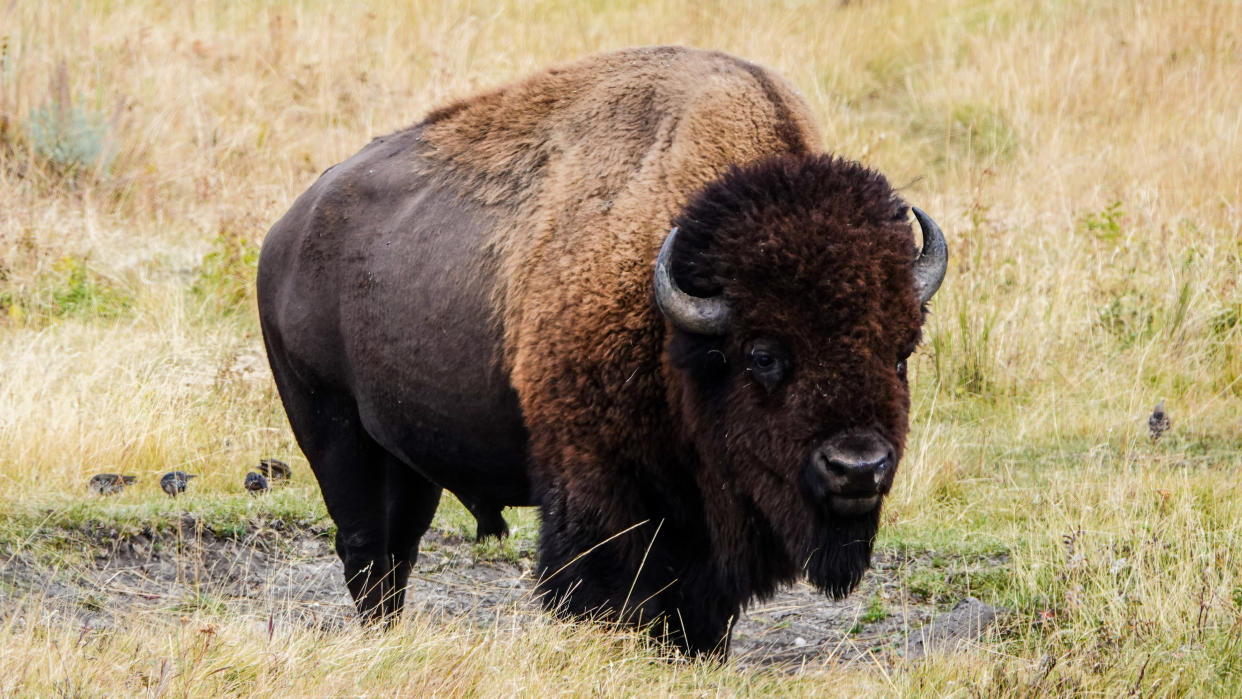Thoughtless Yellowstone tourists pin bison against wall during the rut

A group of people at Yellowstone National Park have been recorded crowding around a bison standing next to an inn, effectively penning the animal in with no easy way to escape. Bison are currently in their mating season (known as the rut) when males are particularly unpredictable and prone to aggression, and this animal appears to be sticking out his tongue in a flehmen response as he tries to catch the scent of a female.
The video (which you can see below) was shared via Instagram account TouronsOfYellowstone, which calls out bad behavior at US National Parks – often involving bison. Other examples have included people trying to pet bison, sitting in the middle of a herd, and even asking to ride them.
A post shared by TouronsOfYellowstone (@touronsofyellowstone)
A photo posted by on
Bison injure more people than any other animal at Yellowstone, usually when visitors get too close and the animals feel threatened. Two women suffered serious abdominal injuries after being gored at US National Parks this summer, and last year three people were gored at Yellowstone within the space of a few weeks.
"Park staff would like to remind visitors that bison are large, powerful, and wild," said the National Park Service (NPS) in a statement after this year's second attack, which happened at Theodore Roosevelt National Park. "They can turn quickly and can easily outrun humans."
Park regulations state that visitors must stay at least 25 yards (23 meters) from animals like bison, elk, and pronghorn at all times, and 100 yards (91 meters) from bears and wolves.
"Approaching bison threatens them, and they may respond by bluff charging, head bobbing, pawing, bellowing, or snorting," says the NPS. "These are warning signs that you are too close and that a charge is imminent."
Better wildlife photography
Keeping your distance from animals and using a telephoto lens won't just help keep you safe, it will also help you achieve better wildlife photos. The best shots show animals behaving naturally, which only happens if you are calm, quiet, and patient.
"Take time to watch the animals in their environment as quietly as you can," professional wildlife photographer Emma Jacobs told Advnture in a recent interview. "What are they doing? What is around them? What is their character like? All these things can give you ideas for photos and help you tell a story."
Jacobs also urges photographers to stick to the principles of leave no trace, and make sure to respect wildlife.
"Only photograph natural behaviors and always avoid making animals do anything to cause them harm or distress.” That means never approaching them, feeding them, or trying to flush them out of vegetation for a better view.
For more advice, see our guide six wildlife photography tips from a pro.
The best binoculars: enjoy wildlife watching from a safe distance

